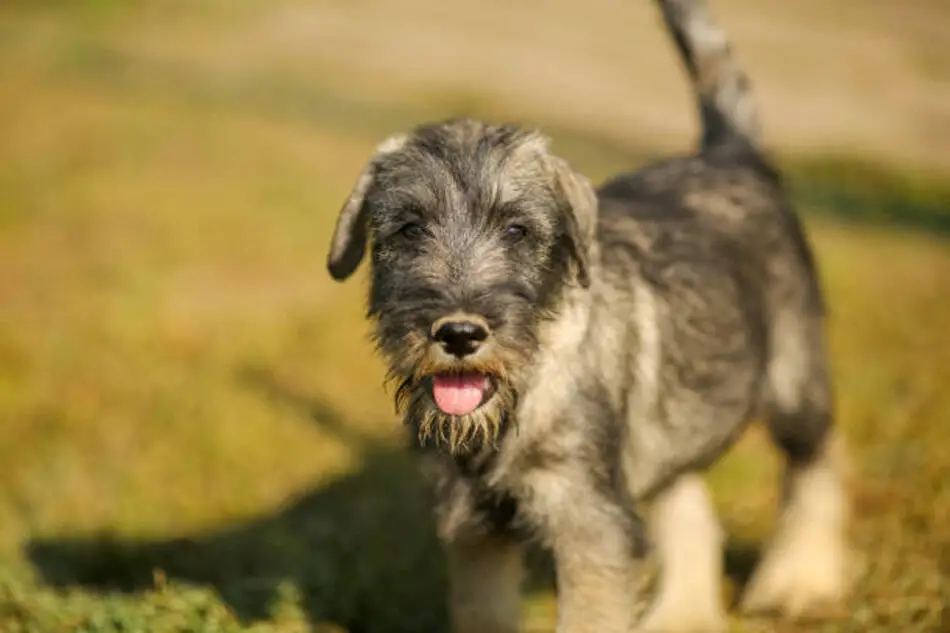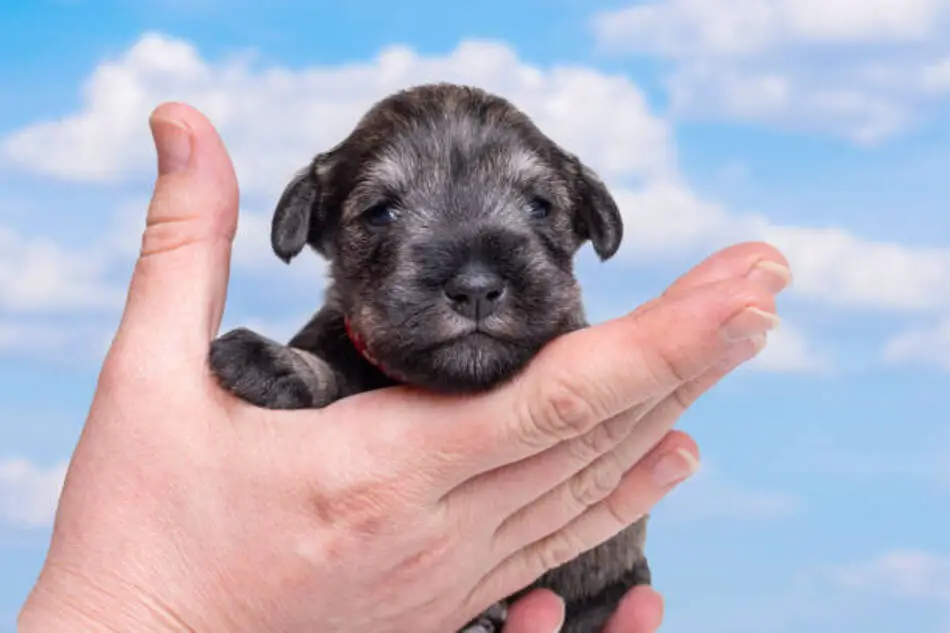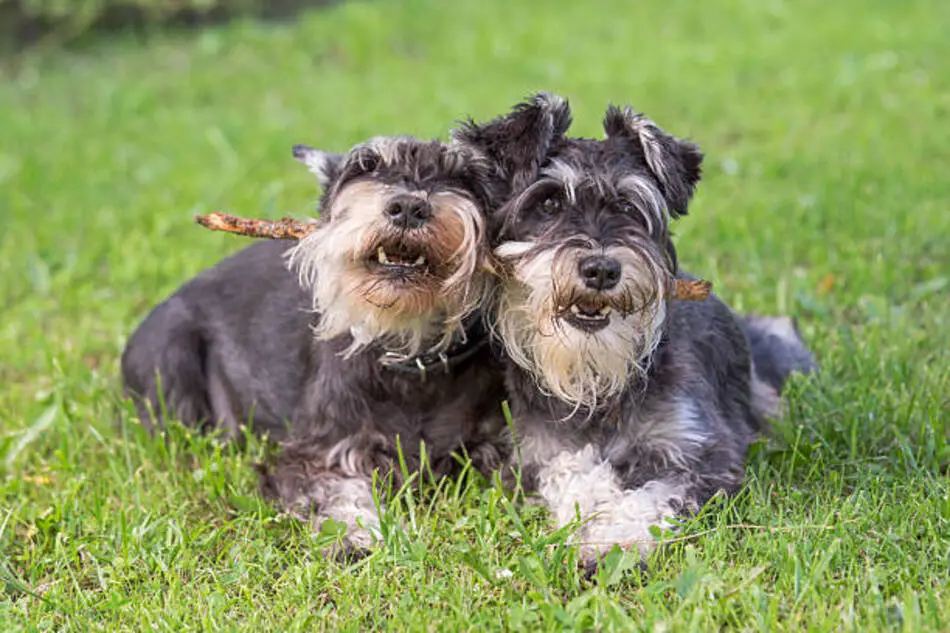Schnauzers are a popular breed of dog that is known for their distinctive beard. Where do Schnauzers originate from, and what are some of the other interesting facts about this breed?
The Schnauzer is a breed of dog that originated in Germany. The name “Schnauzer” comes from the German word for “snout,” referring to its distinctively bearded muzzle. They come in three different sizes: standard, miniature, and giant. The Schnauzer is known for being sturdy and loyal, as well as being great with kids.
The Standard Schnauzer is the original and largest of the three varieties. It stands 18-20 inches tall at the shoulder and weighs 30-50 pounds. The Giant Schnauzer is even larger, standing 23-27 inches tall and weighing 65-85 pounds. The Miniature Schnauzer is the smallest variety, standing 11-13 inches tall and weighing 15-20 pounds.
All Schnauzer varieties have wiry, double coats that are salt-and-pepper, black, or silver. The Standard and Giant varieties require regular brushing and trimming to keep their coat from matting. The Miniature Schnauzer’s coat is easier to care for and only requires an occasional brushing.
Schnauzers are energetic, alert, and loyal dogs that make great companions and watchdogs. They are intelligent and quick to learn new things, but they can also be stubborn and headstrong at times. Schnauzers need daily exercise to stay healthy and happy, and they do best in homes with a fenced yard where they can run and play.
If you’re looking for a lovable, loyal, and active breed, a Schnauzer may be the perfect breed for you!
What Breeds Were Used To Make Schnauzer?
The Schnauzer is a German breed of dog. The first recorded use of the word “Schnauzer” was in 1842, although the breed was developed in the 14th or 15th century. The name comes from the German word for “snout” and refers to the schnauzer’s characteristic mustache.

There are three types of Schnauzers: Standard, Miniature, and Giant. All three types share common characteristics such as whiskers, a beard, and eyebrows. The Giant Schnauzer is the largest of the three, followed by the Standard Schnauzer and then the Miniature Schnauzer.
All three types of Schnauzers are intelligent, alert, and loyal dogs that make great family pets. They are also relatively easy to train and make excellent watchdogs.
The Standard Schnauzer
It is the original type of Schnauzer and was developed in Germany in the 15th century. It is believed that the Standard Schnauzer was created by crossing the German Pinscher with the Black Forest Wolfhound, the Gray Wolf, and the gray Kharkov Hound. The Standard Schnauzer was originally bred as a working dog and was used for tasks such as guarding property, herding livestock, and ratting.
The Miniature Schnauzer
This is a smaller version of the Standard Schnauzer and was developed in Germany in the 19th century. It is believed that the Miniature Schnauzer was created by crossing the Standard Schnauzer with the Affenpinscher and possibly the Poodle. The Miniature Schnauzer was originally bred as a companion dog and is still popular as a pet today.
The Giant Schnauzer
It is the largest of the three types of Schnauzers and was developed in Germany in the 19th century. It is believed that the Giant Schnauzer was created by crossing the Standard Schnauzer with the Great Dane, Rottweiler, and Newfoundland. The Giant Schnauzer was originally bred as a working dog and was used for tasks such as guarding property, herding livestock, and pulling carts.
Today, all three types of Schnauzers are popular pets around the world. They are intelligent, affectionate breeds that make great companions.
Standard Schnauzer At A Glance
- Size: Standard Schnauzers are 18-20 inches tall at the shoulder and weigh 30-45 pounds.
- Coat and Color: The Standard Schnauzer has a harsh, wiry coat that is usually black or salt-and-pepper in color. Some have small patches of white on their chest.
- Grooming Needs: The Standard Schnauzer requires regular grooming to keep his coat in good condition. He should be brushed several times a week and his coat should be trimmed every few months.
- Origin: The Standard Schnauzer originated in Germany, where he was used as a farm dog and guard dog. He is the oldest of the three Schnauzer breeds and is the ancestor of the Miniature and Giant Schnauzers.
- Temperament: The Standard Schnauzer is loyal, brave, and energetic. He is very intelligent and trainable. He makes a good watchdog and is protective of his family.
- Activity Level: The Standard Schnauzer needs moderate exercise. He enjoys a daily walk or run and will also enjoy playing fetch or going for a swim.
- Health Issues: Some health issues that may affect the Standard Schnauzer include hip dysplasia, diabetes, epilepsy, and bloat.
- Life Expectancy: The life expectancy of the Standard Schnauzer is 12-14 years.
Miniature Schnauzer At A Glance
- Size: 14-16 inches tall at the shoulder and weighing 11-20 pounds
- Color: Black, silver, or salt and pepper. Some may have a small amount of white on the chest.
- Coat: Double coat with a wiry outer coat and a soft, dense undercoat
- Temperament: Schnauzers are intelligent, active, and loyal breeds who make great companions. They can be protective of their family and may bark at strangers.
- Activity Level: Miniature Schnauzers need moderate exercise. A daily walk or play session will suffice. They also enjoy having a backyard to run around in.

Giant Schnauzer At A Glance
- Size: 28 to 30 inches
- Weight: 95 to 110 pounds
- Coat Type: Wiry and dense
- Color: Black, pepper and salt, or silver-gray with black markings; may also be liver-colored or wheaten
Overview
The Giant Schnauzer is a working dog of German origin. He is the largest member of the Schnauzer family, which includes Standard and Miniature Schnauzers. The Giant was developed in the late 1800s to serve as a versatile farmhand, capable of herding cattle, guarding property and homes, and even pulling carts. Today, he is prized as a police and military dog, assistance dog, and loyal companion.
Despite his formidable size, the Giant Schnauzer is not aggressive. He is, however, fiercely loyal to his family and can be territorial. Giants need firm, consistent training and socialization from an early age to become well-rounded members of society. This intelligent breed is a quick learner but can also be stubborn, so it’s important to find a trainer experienced in working with this breed.
Exercise And Health
Giant Schnauzers require plenty of exercise and love being part of the action. They’re happiest when given a job to do, whether it’s herding children around the yard or taking a daily jog with their owner. If left alone for too long, they can become bored and destructive. Given their size and energy level, Giants are not well suited to apartment living. They do best in a home with a large backyard where they can run and play.
The Giant Schnauzer is an overall healthy breed, but like all dogs, he is susceptible to certain health conditions. Some of the most common include hip dysplasia, elbow dysplasia, von Willebrand’s disease, and bloat. To help ensure your Giant remains healthy throughout his life, be sure to purchase him from a reputable breeder who screens breeding stock for health problems. In addition, be sure to take him to the veterinarian regularly for checkups and vaccinations.
With his strong work ethic, loyal nature, and impressive size, the Giant Schnauzer is an excellent choice for active families looking for a versatile and intelligent breed. While he does require some special care, including regular grooming and plenty of exercises, the Giant Schnauzer is a loving and devoted companion who will bring joy to your home for years to come.
Bottom Line
It is believed that the Schnauzer breed originated in Germany, specifically in the region around the city of Munich. The first recorded mention of the breed was in 15th-century German literature, and the breed continued to gain popularity in Germany throughout the centuries. Today, the Schnauzer is one of the most popular breeds in Germany and is also popular in many other countries around the world. The Schnauzer is a versatile breed that can be used for a variety of purposes, such as companionship, herding, and guarding.
Other Schnauzer Articles:

